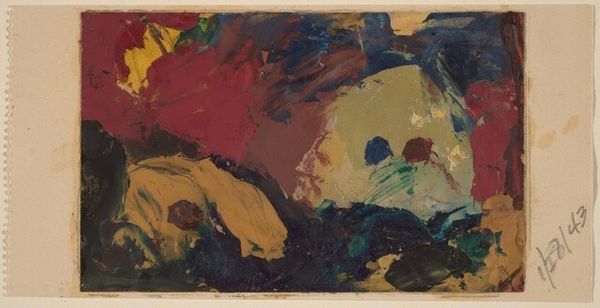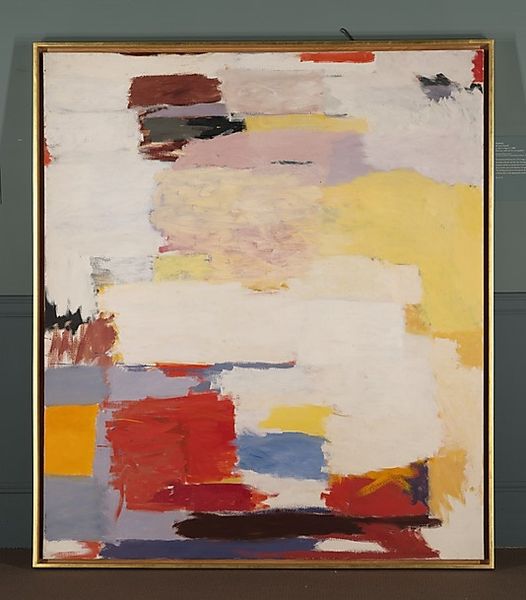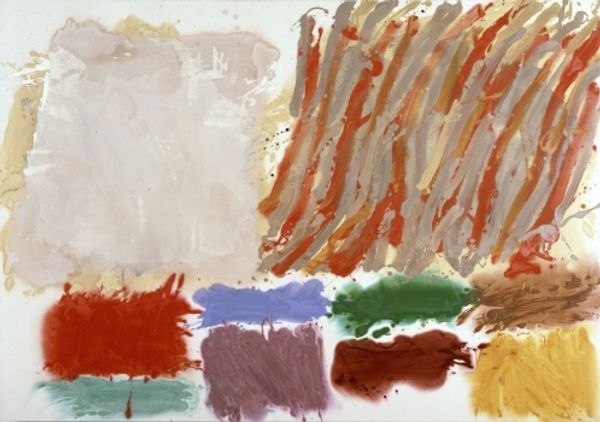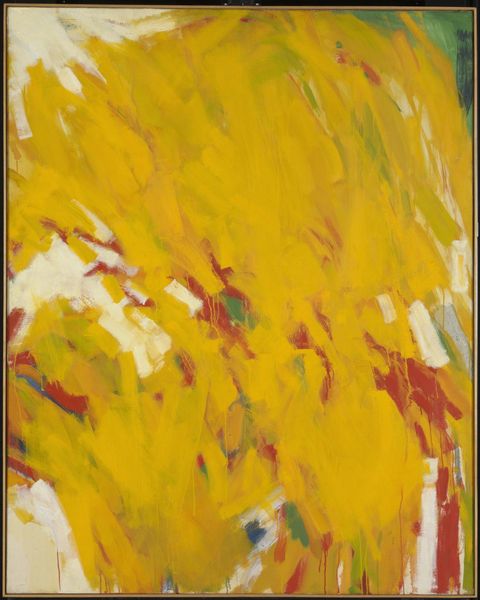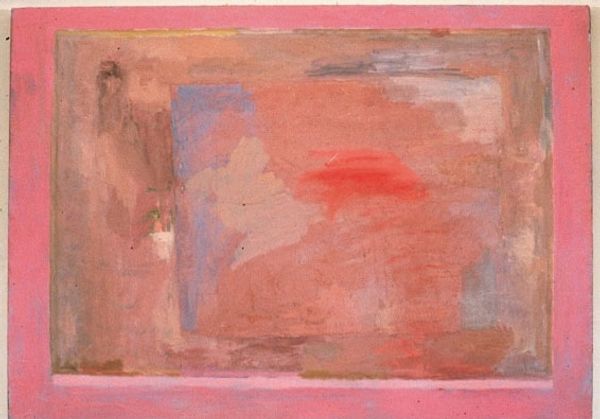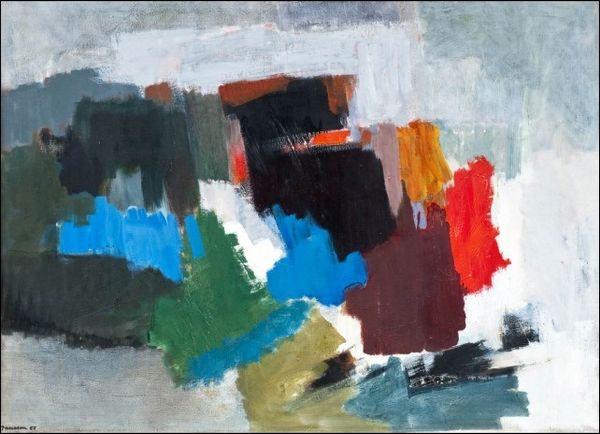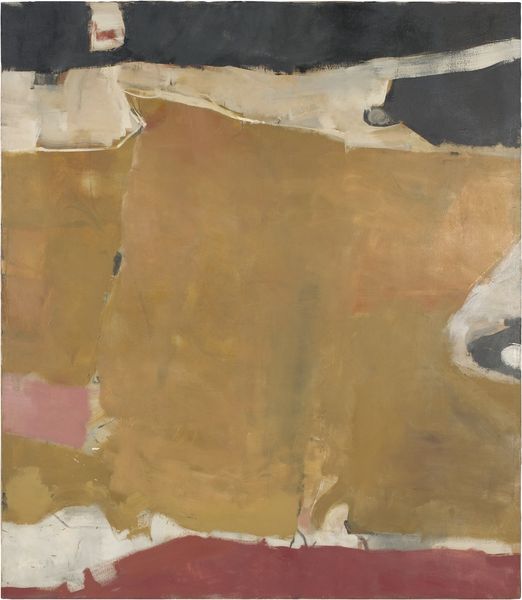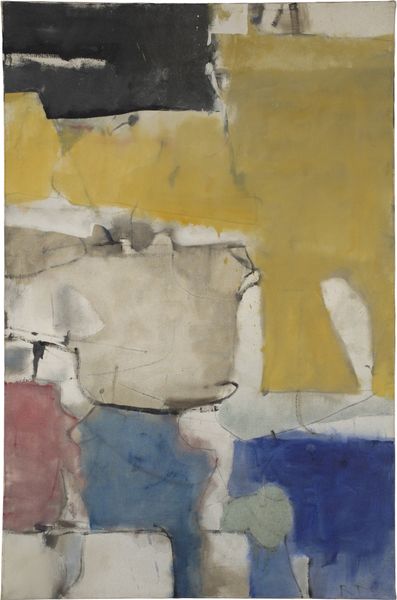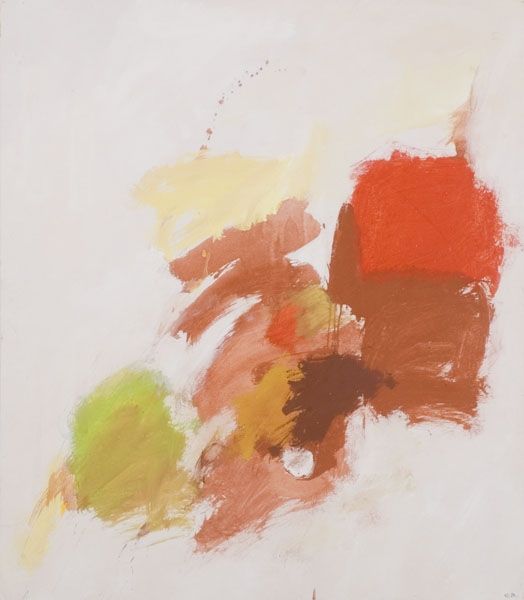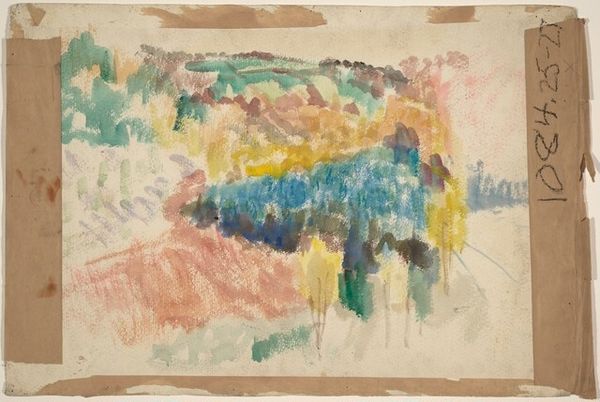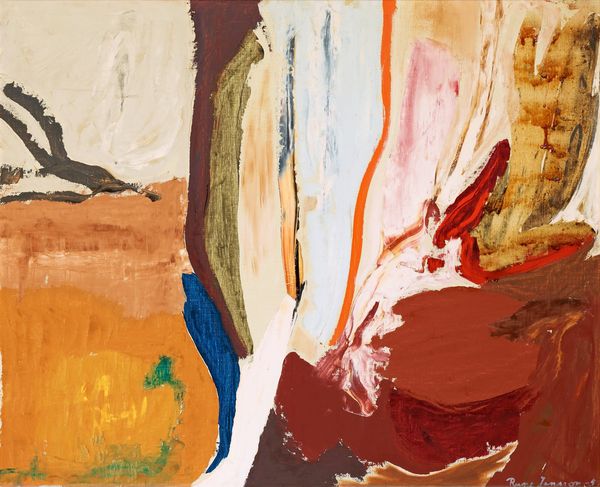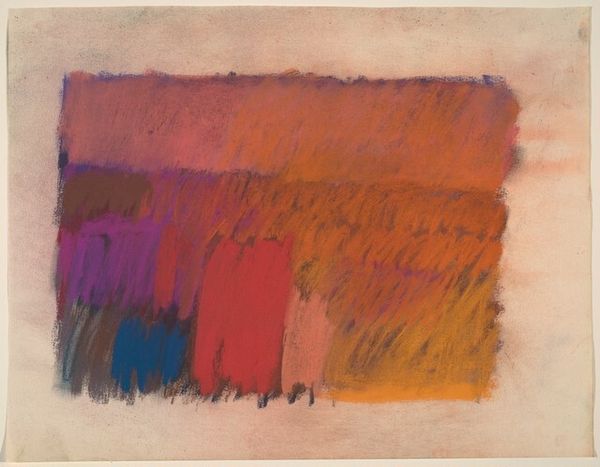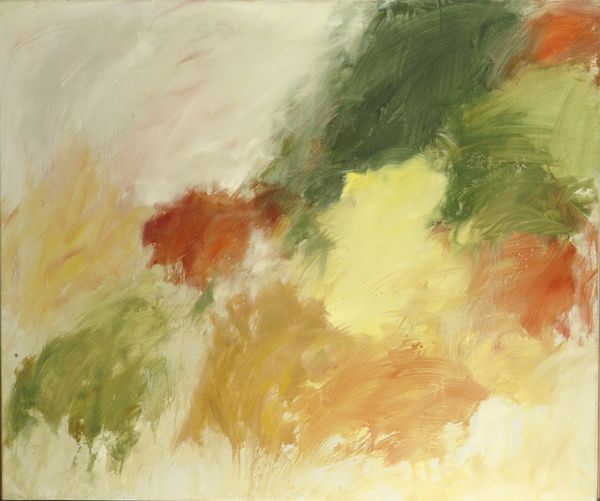
Copyright: Friedel Dzubas,Fair Use
Curator: This is Friedel Dzubas’s “Turning Point,” created in 1983 using acrylic paint on canvas. What’s your immediate reaction to this piece? Editor: A melancholic landscape—a somber yet oddly vibrant emotional terrain. It's expansive but somehow confined. Curator: It’s a late example of color field painting. Dzubas, who came from a formalist and expressionist background, explores color as the primary conveyor of meaning, largely independent of form. Notice how the chromatic relationships across the horizontal space are activated. Editor: Yes, the horizontal format allows the colors to breathe. The large blocks of crimson and deep blue-black create tension. It evokes the cultural milieu of the 80s; economic changes brought new tensions, yet simultaneously, an explosion of culture with postmodernism took center stage. There’s that contrast here: darkness on one end, lighter colors towards the other. Curator: Consider also the interplay between the impasto and the staining. The texture of the layered acrylic creates palpable depth—literally. The optical mixing encourages active viewership, where the experience changes based on proximity and angle. It recalls a modified theory of the picturesque in the way the aesthetic unfolds in space and time. Editor: Right, this interplay of layering gives it depth and weight. I see something unsettling in those colors. The dark portion gives a sense of unease, of unspoken social realities weighing heavily on the aesthetic surface, mirroring, in some way, the complexities of cultural production during this period. It speaks about anxiety. Curator: Perhaps. But at the level of formal organization, the painting eschews narrative content or representation. Instead, the goal is optical stimulation and emotive response through the chromatic effect alone. Editor: Even in its formalism, “Turning Point” exists within a specific historical context. We see more and more abstract paintings like this showing up, pushing the role of museums as spaces that reflect, critique, and, at times, resist cultural narratives. It’s an assertion of art’s social agency. Curator: Well, by parsing the formal qualities, and considering how its elements construct experience, we reveal ways of making meaning inherent in its material construction. Editor: And in understanding the historical context, we uncover what such a form contributes, culturally, and politically. Food for thought.
Comments
No comments
Be the first to comment and join the conversation on the ultimate creative platform.
